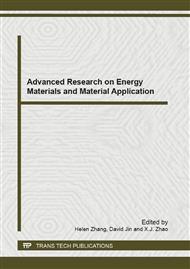p.175
p.179
p.183
p.187
p.191
p.197
p.202
p.206
p.211
A Thermal Fatigue Life Prediction Method of Aluminum Alloy Piston in Material Application Engineering
Abstract:
In this paper, based on the Manson-Coffin fatigue theory, a thermal fatigue life prediction method for aluminum alloy engine piston is established, by introducing the nonlinear functions between the fatigue strength coefficient, fatigue continuation coefficient and elastic modulus with temperature. Compared with the results from the linear elastic model and the linear plastic model application, this nonlinear thermal fatigue life prediction method’s results fit much better to the experimental results, which means that this method is more accurate and credible than the other models.
Info:
Periodical:
Pages:
191-196
Citation:
Online since:
October 2012
Authors:
Keywords:
Price:
Сopyright:
© 2012 Trans Tech Publications Ltd. All Rights Reserved
Share:
Citation:


